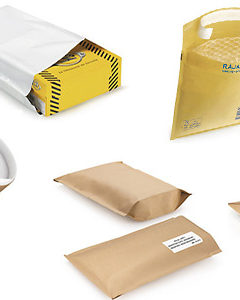If you have ever thought about the concept of sustainable development, you know that it is based on three pillars: economic, environmental and social. Do you want to implement a sustainable logistics strategy? If so, you need to consider the growth of your company, the environmental issues associated with your supply chain and the people involved in the entire global logistics chain. To do this, let these 7 resolutions guide you towards sustainable logistics in your company.
Resolution 1: Establish a responsible purchasing policy
The goal of your first resolution is to create a supply chain that contributes to sustainable development. To this end, consider whether you will prioritise short supply chains or local suppliers in your transport and logistics strategy. You should also find out about each of your suppliers and what environmental and social commitments they have made.

Resolution 2: Rethink your packaging strategy for sustainable logistics
Within your logistics and supply chains, packaging is probably one of the easiest elements to change in order to improve your company’s environmental responsibility. To this end, start by getting rid of empty space in your shipments. This empty space is not very environmentally responsible, as it limits the optimisation of handling by logistics service providers and forces the excessive use of raw materials. However, it is also costly for you if it is charged by volumetric weight!
So make sure you choose packaging that is as close as possible to the size and weight of your goods. Make sure you choose the right cardboard packaging to protect your products.
Secondly, choose environmentally responsible packaging – this is essential for sustainable logistics. Not only must this packaging be environmentally friendly, but it must also improve your customers’ experience so that you remain competitive in the marketplace.
To this end, don’t hesitate to turn to the 5R packaging method. This method is based on five pillars to help you find packaging that is better for the planet:
- Reduce the amount of raw materials used in packaging and the weight and volume of packaging to a minimum – for example, by using packaging with an integrated filler.(Reduce)
- Reuse packaging as much as possible – for example, use returnable packaging, reusable plastic pallets or plastic stacking boxes instead of cardboard boxes for storage.(Reuse)
- Replace, i.e. find alternatives that are better for the planet – for example kraft tape instead of plastic or paper instead of plastic packaging.(Replace)
- Renew, i.e. find packaging made from materials that are naturally renewable in nature – for example, packaging made from biological sources or compostable packaging.(Renew)
- Recycle – through recyclable packaging or packaging made from recycled materials.(Recycle)
Resolution 3: Encourage better sorting of waste in the warehouse
As a logistics manager, your goal is also to ensure that your teams behave in an environmentally responsible way. And to achieve this, your warehouse management must include a strategy to raise awareness of waste segregation.
To this end:
- Start by conducting an audit of your current sorting practices for your five waste streams and estimate what efforts you need to make to improve.
- Install bins and containers to make sorting easier. Multi-coloured bins and bags placed in strategic locations (such as the bin next to the coffee machine) will help you improve this management.
- Choose the right collection service providers for different waste streams.
- Educate your operators on selective sorting and drive your strategy by rewarding your teams’ efforts on a daily basis.
To find out more, read our short guide to improving waste management in the workplace.

Resolution 4: Make your existing processes as paper-less as possible
Dematerialising or digitising your processes will allow you to reduce paper consumption and contribute to greener supply chain management. It may seem like a small step towards sustainable logistics, but it’s one that can make a big difference!
For example:
- If you haven’t already done so, implement a warehouse management system (WMS) to avoid printing stock cards for order preparation.
- Send less paper mail to service providers, customers and prospects, and encourage communication via email.
However, make sure you reach for green IT solutions where possible – digital solutions that also take the environment into account.
Resolution 5: Design an environmentally responsible freight strategy
As you know, in a logistics and transportation strategy, probably the most polluting stage of the supply chain is… transport of your goods. Therefore, it is essential to rethink your supply strategy and focus on sustainable logistics.
Start by rethinking delivery times. Express deliveries often require trucks to go out almost empty – ecological nonsense! So offer your customers the option of slower but greener transport of their products. However, be careful not to damage the customer experience in the process. Leave the choice to the customer, whose satisfaction remains your priority.
Then set up delivery methods that are as carbon-neutral as possible. In particular, think about these eco-friendly shipping methods for last-mile delivery, the most polluting of the entire logistics chain. For example, in the case of urban logistics, you can switch to delivery by couriers on bicycles or cargo motorcycles.
Do you have your own fleet? Consider buying less polluting vehicles powered by e.g. green natural gas.
Resolution 6: Introduce (truly) people-oriented management
Implementing a sustainability strategy is not just about managing the supply chain in an environmentally friendly way. You also need to consider the human factor when managing your warehouse. Addressing this issue will also help you retain employees and increase the productivity of your logistics department.
To this end:
- Create a benevolent management style with an open-door policy so that you can talk about the problems faced by your warehouse workers.
- Make your teams as autonomous as possible to maximize the value of their work.
- Consider their career growth expectations through an ongoing skills development plan.
- Always prioritise the safety and well-being of your logistics team. In particular, look for ways to reduce the risk of musculoskeletal disorders (MSDs) by using the right machines and appropriate training. To this end, consider equipping them with shop floor chairs, a modified workbench or packing station that can be adapted to your operators’ needs, as well as an anti-fatigue mat specifically designed to combat MSDs.

Resolution 7: Reorganise your warehouse in a more environmentally friendly way
One last good resolution for your company’s sustainable logistics: make sure your warehouse space is as eco-friendly as possible.
Start by limiting the movement of your logistics operators in the warehouse. Movement, after all, means turning on the lights and using handling equipment more intensively. So reviewing your inventory management strategy can help reduce the physical flow of goods in your warehouses. In addition, by better managing these movements, you can increase the productivity of order pickers in the picking phase, thereby improving their work performance.
You should also think about managing energy consumption more efficiently. In particular, you can:
- Replace the lights in the warehouse with LEDs, which consume less energy than conventional bulbs and have a longer lifespan.
- Choose suppliers who use renewable sources to generate electricity and hot water
- Reduce energy waste by alerting your teams to the need to turn off machines that may not be on all the time, or by checking the insulation of doors and windows.
It’s always a good time to make these good resolutions for sustainable logistics management. Remember: it ‘s one of the keys to transitioning to a warehouse of the future that takes into account the needs of your business, your people and the planet.














